Agra: The city of the Taj Mahal was among India’s first Covid-19 hotspots when the pandemic hit India in March, but it initially managed to contain it successfully, even earning praise from the Union Ministry of Health and Family Welfare for the ‘Agra model’.
But three months on, things have deteriorated so much that Agra finds itself back under the scanner — its death rate of 7 per cent is more than double that of the rest of Uttar Pradesh, and higher even than metropolises like Mumbai and Delhi, which have an exponentially higher number of novel coronavirus cases.
The administration and doctors say the city’s location near the national capital Delhi and other states like Rajasthan and Haryana, as well as patients coming in late from other smaller towns of UP, have contributed to the cases and deaths.
As of 28 June, Agra, a city of 22 lakh people, has a cumulative total of 1,210 Covid-19 cases, with 85 deaths and 111 active cases, according to the daily bulletin put out by the administration. The city has 56 containment zones and a bed capacity of 2,241.
Now, the Agra administration has stepped up its efforts, launching aggressive testing drives and even random pool testing. The total number of samples collected so far is 21,541.
Also read: UP’s ‘Agra model’ under scanner as Covid cases rise, govt says it’s due to increased testing
Breaking down the cases
Dr Prashant Gupta, superintendent of the Covid isolation facility at the Sarojini Naidu Medical College Hospital, said the difference between the cases in March-April and now was that patients were showing more severe symptoms. He explained this by saying there was a gradual increase in the number of patients.
“Earlier, fewer people were getting infected, and those who were infected were young,” Gupta said.
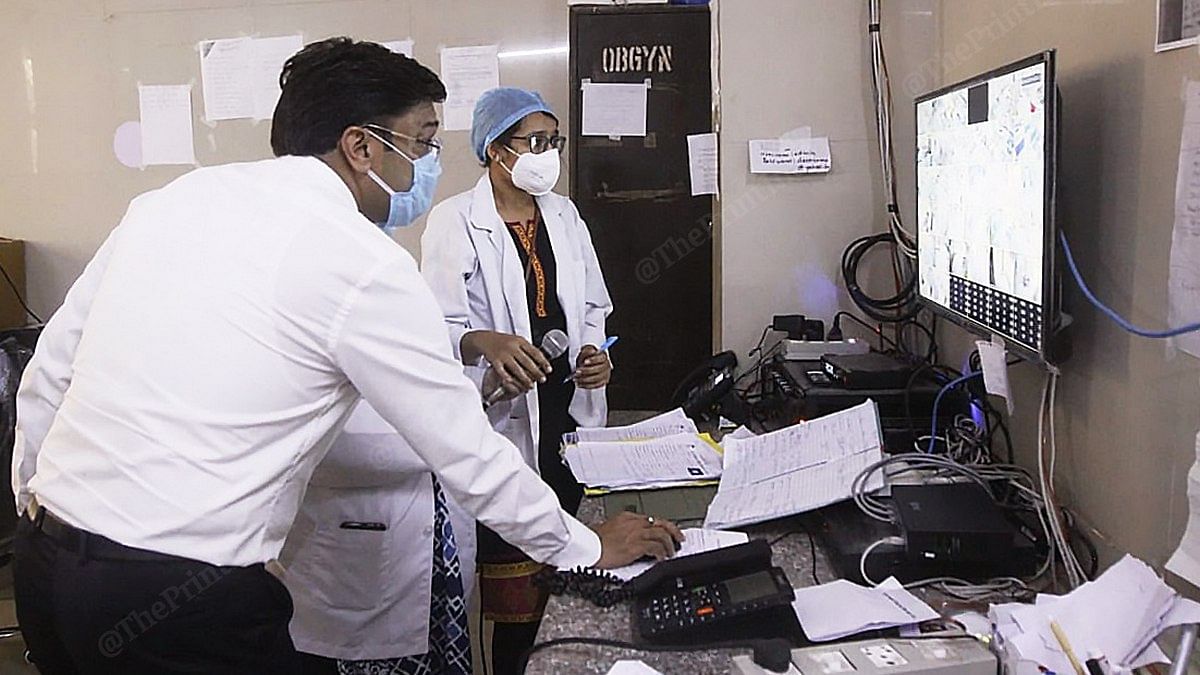
Now, due to Unlock 1.0, younger people were infecting older persons with comorbidities, and the hospital is receiving patients at a more advanced stage of the disease.
“People come to the hospital at the very end as they are both sceptical and wary of being admitted,” Dr Gupta said.
District Magistrate Prabhu N. Singh concurred that the reason for the high death rate was people coming for treatment at almost the last moment. “Many of the deaths have also been due to massive cardiac arrest, multiple organ failure and kidney failure,” Singh said.
Chief Medical Officer R.C. Pandey, who was recently appointed after Mukesh Vats was transferred, added that another contributing factor for the high death rate was the number of referral cases coming from towns such as Etah, Mainpuri, Aligarh and Hathras.
“We had three patients from Aligarh who were in a very bad condition and passed away shortly after they reached Agra,” Pandey said, adding that even private hospitals in Agra were sending them referral cases, most of whom were extremely unwell.
DM Singh also said Agra’s proximity to Delhi, Rajasthan and Haryana was adding to the challenge it faced, as a large number of people who had tested positive in the city and nearby smaller towns were those who had reverse-migrated from bigger cities.
Death rate
Agra had reported its first Covid-19 case on 13 March, but its first reported death occurred only in April. According to data provided by the local administration, there were six Covid deaths in April, among 539 reported cases. In May, there were a total of 718 cases with 49 reported deaths, while in June, until the 28th, the city had recorded 311 cases with 31 deaths.
According to Singh, 70 per cent of deaths were of people aged more than 70 years of age, while 20-22 per cent were between 40 and 60 and had comorbidities, while the rest were under 30 years old.
The DM added: “Once this pandemic gets over, we can analyse and discuss the death rate properly. It is, of course, a cause of concern. We have ensured that we get the death audit on the same day itself, and are working day and night to lower the death rate.”
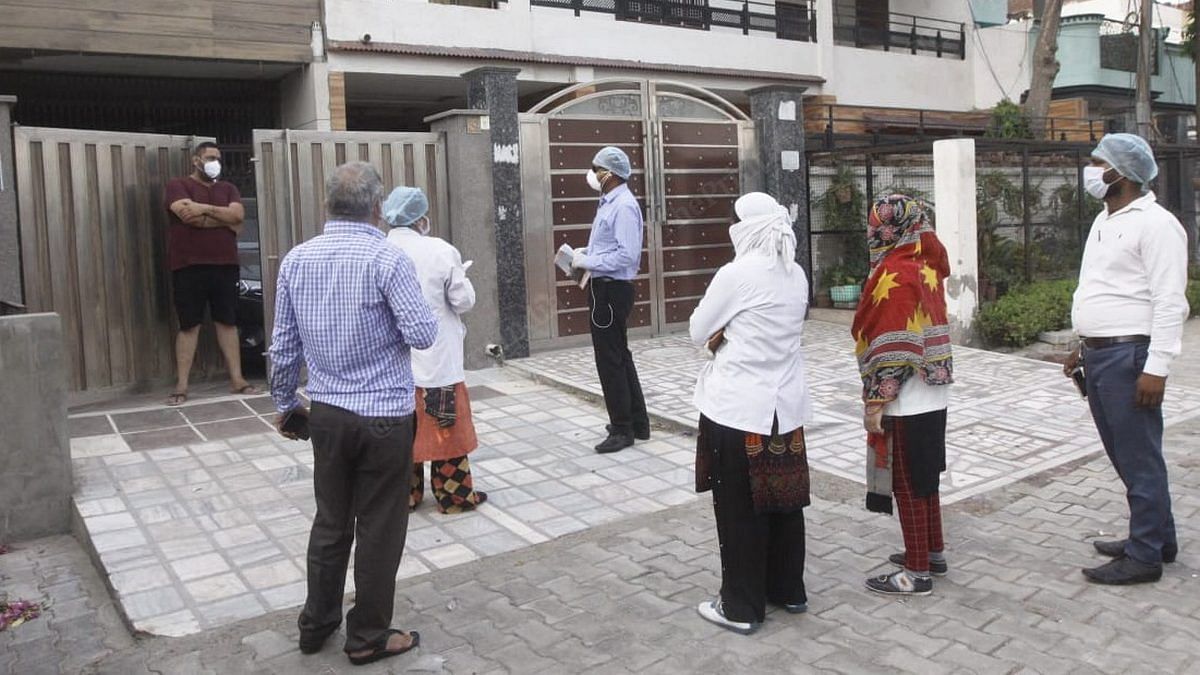
CMO Pandey said the main focus for the authorities and health workers now was to lower the death rate from its current 7 per cent. “It is our top focus now as our daily cases are very few and there is no community spread,” he said, with the number of new cases reported Sunday standing at 14.
Agra’s high death rate was recently flagged by Congress general secretary Priyanka Gandhi Vadra, who tweeted that 28 people had died in 48 hours in the city, and called the ‘Agra model’ flawed. The DM served her a legal notice for falsely reporting the matter and creating panic, but later, the matter was resolved.
Asked about this, Singh said: “I would not like to comment on the matter. However, I would like to stress that we are doing our best in terms of containing the virus and can assure that no deaths will take place because of negligence by anyone.”
Also read: UP’s ‘Agra model’ questioned as Covid deaths rise in 4 districts, Priyanka targets Yogi govt
Hospitalisation profile
It was reported on 22 June that at least 28 people had died within 48 hours of admission in Agra, and following this, the UP government had ordered a detailed report from the administration and hospital authorities.
Asked whether the probe yielded any results, DM Singh answered in the affirmative, but did not divulge any details.
He said: “The last few days have been better and the number of deaths has been decreasing due to a change in the drugs being administered to patients.”
CMO Pandey was also asked about the average hospitalisation period of patients, and he replied: “While some succumbed to the diseases within 48 hours, some after a week.”
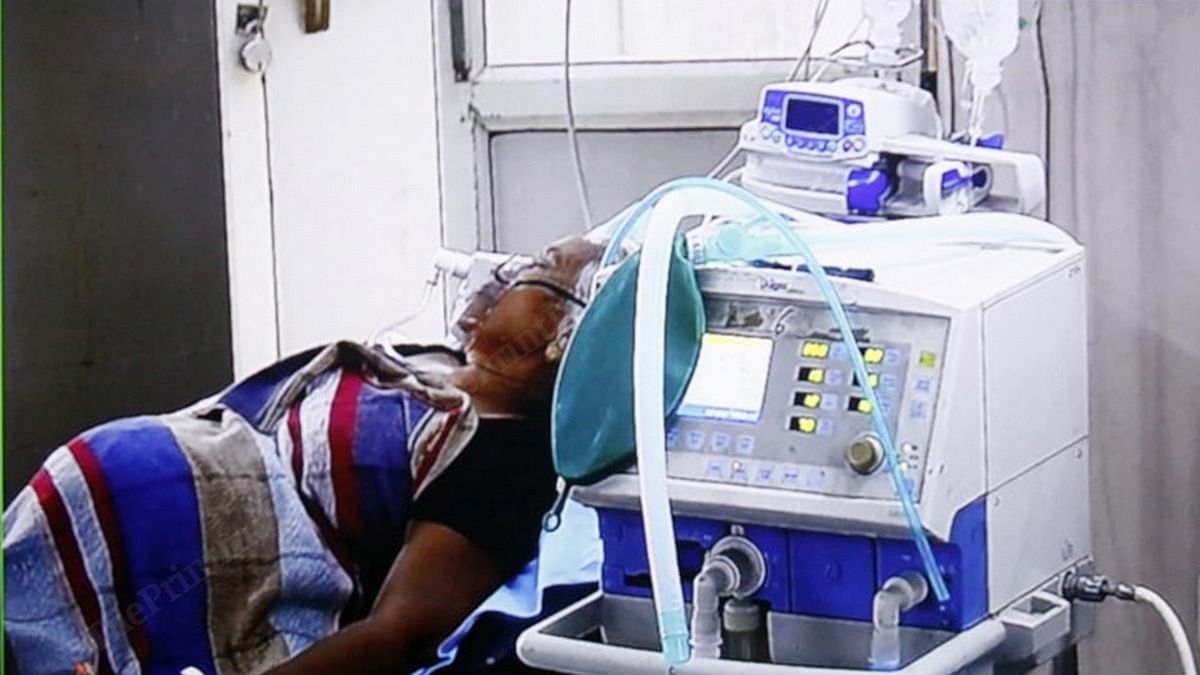
Gupta said between 20-25 per cent of the patients at the SN Medical College Hospital Covid-19 facility had to be converted from general ward to ICU — around 125 out of 500.
“Every day, there are at least 3-4 patients in the ICU,” he said.
ThePrint found that only one patient in all of Agra was on a ventilator Friday, and none Saturday.
Also read: ‘Zeal for living’: How 97-year-old man in Agra, bed-ridden with lung disease, beat Covid
Increased testing
There have been claims, such as from former CMO Dr A.K. Kulshreshtha, that the high death rate in Agra has been due to the low number of testing samples.
However, the DM countered this by saying the administration had, in the past 6-7 days, added random pool sampling tests in addition to the normal testing protocols, checking for the infection among healthcare workers, anganwadi workers, ASHA workers, dhaba workers, rickshaw pullers, barbers, people in old-age homes etc and found just two positive cases among 600 tests.
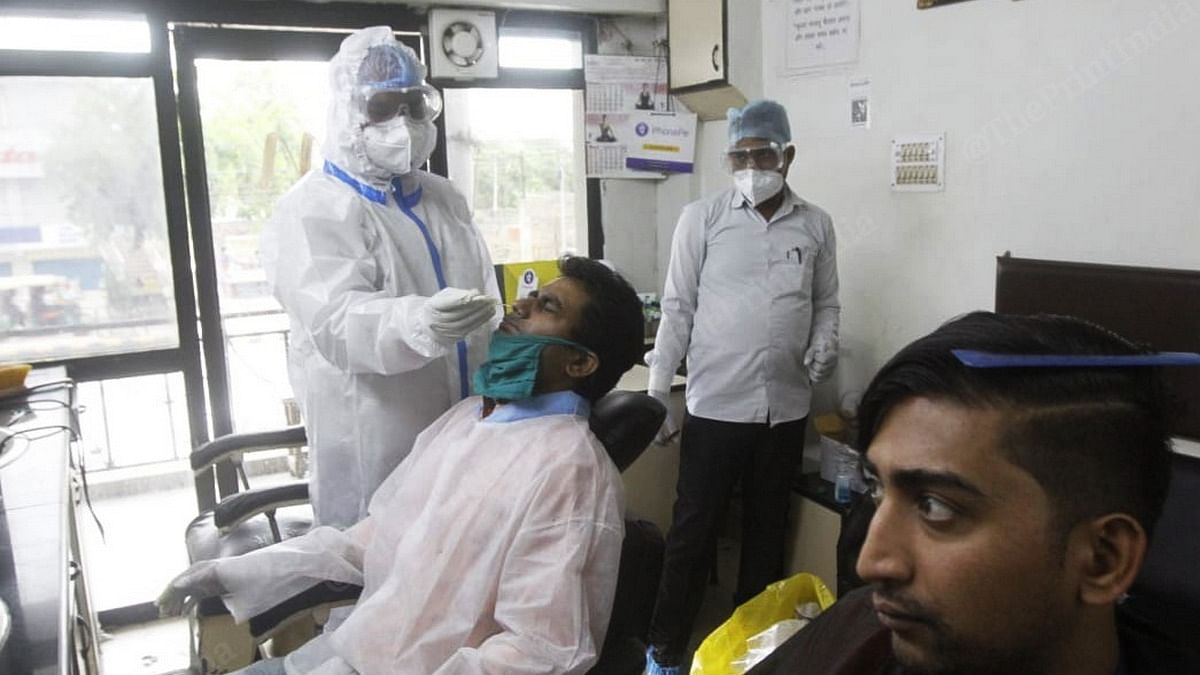
Overall, he said, Agra was testing 4,900 people per million. Apart from the SN Medical College and the district hospital, the city is also utilising six mobile testing vans — two stationed outside private hospitals, two stationed across containment zones, one with the rapid response team and one which monitors contact tracing.
CMO Pandey said whoever had come in contact with a Covid-19 patient, whether symptomatic or not, was being tested. He said: “We need to be more prepared as people from different cities come to Agra for treatment.”
Isolation facilities
DM Singh said the lockdown helped the city prepare for an increase in cases, and it now has 2,241 beds. “Right now, even if we have 2,000 active cases, we can deal with it,” he said.
The city has also designated different isolation facilities for Covid patients — those asymptomatic or with mild symptoms an L1 facility, while those with medium and severe symptoms are sent to L2 and L3 facilities.
The SN Medical College Hospital is an L3 facility, with a total of100 beds in two separate wards — one for confirmed cases and one for suspected cases. Another 100-bed ward is expected to be ready by 30 June.
The hospital also has a Covid control room, which doctors refer to as a “war room”, saying the fight against the novel coronavirus is no less than a war. The control room works in three shifts to cover the 24 hours, monitors the ICU virtually through a huge TV screen. It also has a separate section to report to state authorities.
The SN Medical College also has an e-hospital system and an electronic Covid-care system for higher consultation to cross-check government protocols for certain cases. All the doctors in the general ward for Covid patients work in eight-hour, while the doctors in the Covid-ICU work in 6-7 hour shifts.
The hospital has also deployed a team of psychologists to check up on the patients’ mental and emotional state every day.
Containment strategy
DM Singh also explained his containment model, saying it had eight layers of monitoring.
First, a rapid response team reaches the area, and screens and samples people. Then, a mopping team cleans the infected house for three days straight. Next, a health team comes for door-to-door check-ups and conducts screening through thermal guns and pulse oximeters.
After this, a barricading team cuts off entry-exit points, while a police unit is deployed at the spot. Then, a fire brigade team mops the area yet again, following which there is a third party inspection between 4-6 pm and a daily review with officials.
Singh said when a rapid response team picks up the infected person(s) and takes them to isolation facilities for treatment, that area remains a containment zone for a period of three weeks.
Also read: 12-year-old dies of ‘stomach pain’ after 6 Agra hospitals refuse treatment over Covid scare
Residents complain
However, the city’s residents have contradicted the DM’s claims on the meticulousness of containment.
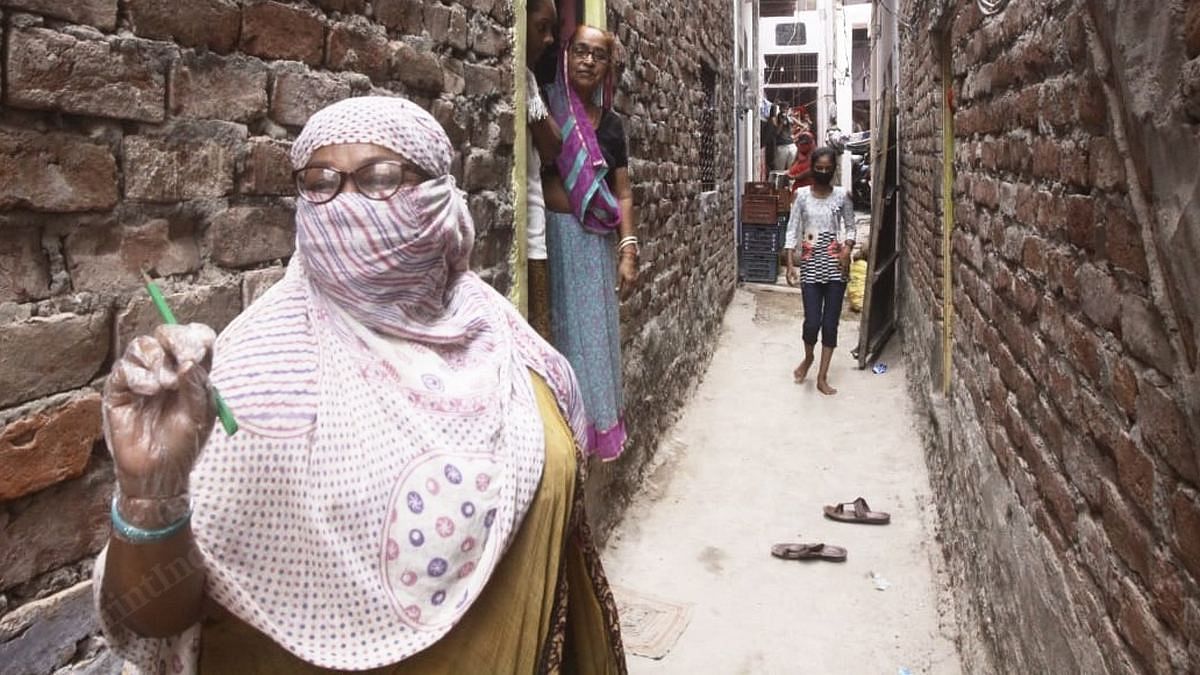
At Tulsi Chabootra, Tajganj, residents complained that “nobody’ was staying limited to their houses, and despite the area being barricaded, people were moving around freely and jumping over the barricades, with police presence to monitor the area.
Rohit Sharma, a resident, told ThePrint: “The government is not monitoring this area properly. No one is adhering to the rules; the barrier is here just in name. The health team also didn’t screen us or check our temperature properly. It came only once after the area became a containment zone on 19 June.”
Sharma added: “Every house has at least one elderly person. We are scared that corona will spread within the community.”
Residents in another containment zone, Namnera, alleged that no one from the area was tested for the virus after a man contracted the disease and was sent to an L1 facility, contradicting CMO Pandey’s claim of contacts being tested.
Ekta, a resident, said she had played with the son of the man who tested positive, while her mother had regularly been in contact with his wife, but no one from her house or neighbouring ones had been tested.
“We were given vitamins and were screened, but not tested. We are a bit worried as their house is right next to ours, and many of us would mingle with their family,” she said.
Also read: No milk or groceries, not enough testing: Residents say they’re barely surviving ‘Agra model’


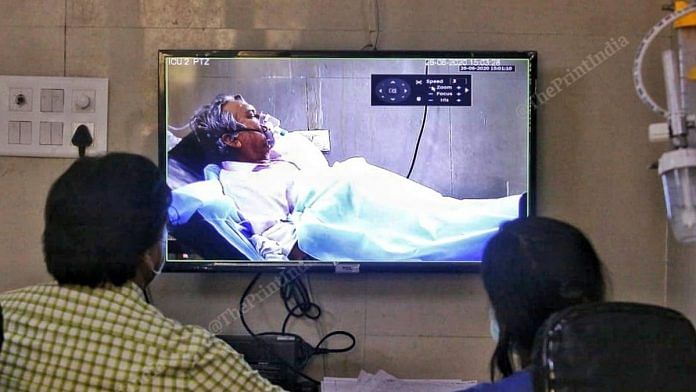

I am from Agra. My father recently came out to be covid Positive. He has mild symptoms but still I decided to get a test because of his age and comorbidity. What follows after it was the reason of high death rate in Agra. Agra being a small city has a lot of social stigma attached to a disease like covid. I know a lot of people because of fear of facility isolation prefer not to get tested and thus they keep on spreading the disease not following self Qurantine. Also, because of this people approach hospitals only things become very serious which ultimately lead to delay in medical attention needed and thus result in high death rates.
Government should allow home quarantine for atleast homes which have separate room and washroom to deal with it. Otherwise middle class of Agra would never go for test and they will keep on dying at high rate.
Also, requested print to cover this story on twitter as well
https://twitter.com/nimitagrwal/status/1278733313209819139?s=19
For you, bhilwara model doesn’t fall within inverted commas, but Agra model does. Shows your prejudices and biases